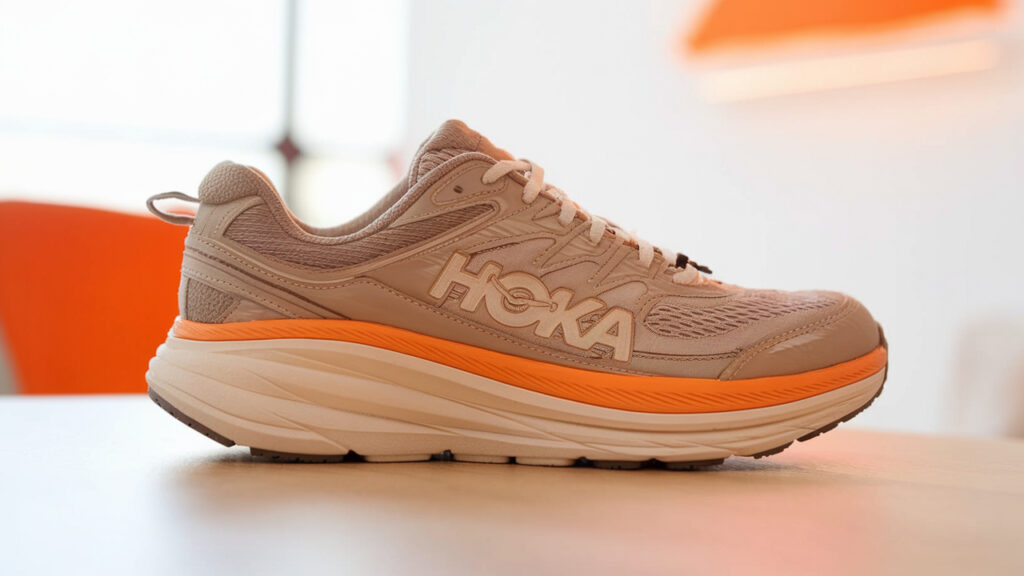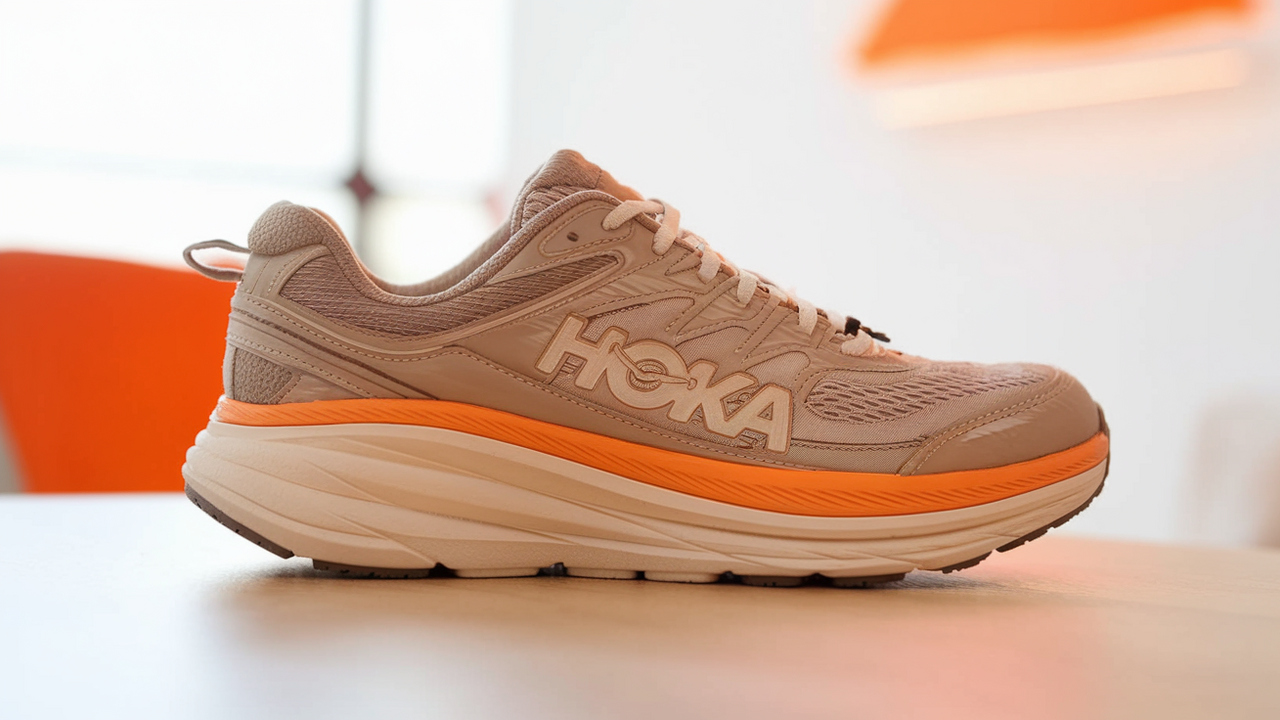Top Hoka Shoes for Diabetics: Safe, Comfortable & Supportive
For people living with diabetes, foot health isn’t optional — it’s essential. Diabetics are more prone to foot sensitivity, circulation problems, nerve damage (neuropathy), and pressure-related sores. That’s why wearing the right shoes is one of the most important steps in preventing foot complications.
Fortunately, Hoka shoes for diabetics offer the perfect combination of comfort, safety, and support. In this guide, I’ll walk you through the best Hoka models that help reduce pressure points, protect your feet, and offer a stable, cushioned ride — all while promoting healthy movement.

Table of Contents
Why Diabetics Need Specialized Footwear
Diabetes can lead to complications such as peripheral neuropathy, which causes tingling, numbness, or pain in the feet. Combined with reduced circulation, this increases the risk of unnoticed injuries, ulcers, or infections. Therefore, diabetic-friendly shoes should offer:
- Seamless interiors to prevent friction and blisters
- Ample cushioning to reduce impact and pressure
- Supportive structures to enhance balance and alignment
- Spacious toe boxes to accommodate swelling or foot deformities
- Lightweight and breathable materials to minimize heat buildup
Are Hoka Shoes Suitable for Diabetics?
Yes, Hoka shoes are among the top choices for diabetics. Their design features, including rockered soles, wide toe boxes, and plush cushioning, provide comfort and support essential for diabetic foot care. Additionally, many Hoka models come with removable insoles, allowing for the use of custom orthotics if needed.
Top Hoka Models for Diabetic Foot Health
1. Hoka Bondi 8 – Maximum Cushioning for Sensitive Feet
The Hoka Bondi 8 is one of the most cushioned shoes in the Hoka lineup. Its full-length EVA foam midsole, extra-padded heel, and wide, stable base provide a gentle ride ideal for sensitive or neuropathic feet. It’s also available in wide sizes, which is important for reducing pressure and friction.
Best for:
- Daily walking
- Neuropathy and joint protection
- All-day wear and swollen feet
Available on Amazon:
2. Hoka Gaviota 5 – Stability and Support
For those dealing with flat feet, overpronation, or ankle instability, the Hoka Gaviota 5 offers structured support without compromising on cushioning. Its H-Frame™ stability system gently guides the foot to improve alignment, essential for avoiding diabetic foot injuries related to uneven gait or imbalance.
Ideal for:
- Arch support
- Overpronation or rolling feet
- Daily support for walking or standing
Available on Amazon:
3. Hoka Clifton 9 – Lightweight Daily Comfort
The Hoka Clifton 9 is lighter and slightly more flexible than the Bondi or Gaviota, making it a great option for diabetic individuals seeking daily comfort without bulk. It features a breathable mesh upper, soft foam underfoot, and a balanced ride suitable for walking, errands, and casual wear.
Great for:
- Daily errands and activity
- Mild to moderate foot sensitivity
- Lightweight, cushioned walking
Available on Amazon:
Key Features to Look for in Diabetic-Friendly Hoka Shoes
When selecting Hoka shoes for diabetic foot care, consider the following features:
- Roomy Toe Box: Reduces friction and accommodates swelling.
- Seamless Interior: Prevents irritation and blisters.
- Plush Midsole Cushioning: Absorbs shock and reduces pressure.
- Stability Features: Enhances balance and alignment.
- Breathable Uppers: Keeps feet cool and dry.
- Orthotic Compatibility: Allows for custom support.
Additional Considerations for Diabetic Footwear
Wide Width Options
If you experience foot swelling, bunions, or hammertoes, wide-width Hoka shoes are a great option. A wider toe box reduces pressure and allows your toes to splay naturally, reducing the risk of developing ulcers or calluses. Models like the Bondi 8, Gaviota 5, and Clifton 9 all offer wide sizing.
Custom Orthotics Compatibility
If your doctor has prescribed diabetic orthotics, Hoka shoes are compatible. Most models come with removable insoles, allowing room for custom devices. The stable base and deep heel cups in models like the Gaviota and Bondi make them especially supportive when used with orthotics.
All-Day Wear for Active Lifestyles
Hoka’s plush cushioning and supportive midsoles make them ideal for diabetics who work on their feet. Whether you’re in retail, healthcare, or teaching, wearing shoes that reduce impact and support your arches can help prevent foot fatigue, joint pain, and pressure-related problems.
Prioritize Foot Health with Hoka
Managing diabetes requires diligent foot care, and choosing the right footwear is a critical component. Hoka shoes offer the cushioning, support, and comfort necessary to protect diabetic feet, allowing you to stay active and healthy.
By selecting models like the Bondi 8, Gaviota 5, or Clifton 9, you can take proactive steps in safeguarding your foot health.
How Hoka’s Rocker Sole Helps Diabetics Walk More Comfortably
One of the standout features of Hoka shoes is their Meta-Rocker sole, which creates a smooth, rolling motion with every step. For diabetics who experience joint pain or foot stiffness, this design reduces the strain placed on the forefoot and heel. The rocker helps distribute pressure evenly across the foot, improving walking efficiency and reducing hotspots that could lead to ulcers or calluses over time.
Ideal for Diabetics with Balance Issues or Fall Risk
As diabetes progresses, it can affect balance and coordination, increasing the risk of falls. Hoka shoes — especially models like the Gaviota 5 and Bondi 8 — feature wide soles, stable bases, and enhanced heel support that improve stability during movement. These features are critical for older adults or diabetics who already feel unsteady on their feet, especially when walking on uneven surfaces or standing for extended periods.
Diabetics Who Walk Frequently Benefit Most
If you’re diabetic and try to stay active through regular walking, Hoka shoes provide the comfort and safety needed to keep moving without damaging your feet. Unlike flimsy sneakers or overly stiff orthopedic shoes, Hokas strike a balance between support and soft cushioning, which encourages daily exercise — an important factor in controlling blood sugar and improving circulation.
Preventative Care for High-Risk Diabetic Feet
For those already experiencing complications like neuropathy, calluses, or pressure sores, switching to Hoka shoes early can act as a powerful preventative measure. By minimizing friction and offloading pressure from sensitive zones, models like the Bondi 8 and Clifton 9 help reduce the risk of worsening conditions, especially when paired with moisture-wicking socks and regular foot checks.
Choosing the Right Sock Pairing for Diabetic Footwear
Even the best diabetic shoes can fall short if paired with the wrong socks. Diabetics should avoid thick cotton socks, which retain moisture and create friction. Instead, pair your Hokas with seamless, moisture-wicking diabetic socks that reduce heat, manage sweat, and prevent blistering. This combination maximizes the foot protection that Hoka shoes are designed to deliver.

